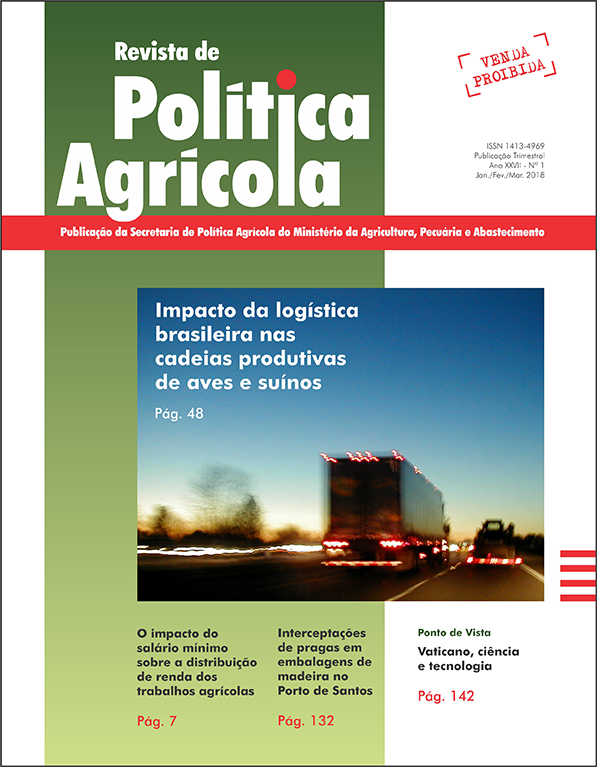The impact of the minimum wage on the distribution of income from agricultural work
Keywords:
concentration of income, counterfactual distribution, labor marketAbstract
This article investigates the contribution of the minimum wage on the process of deconcentration of agricultural work income (permanent and temporary) in the period 2002-2012. The microdata used are from the “Pesquisa Nacional por Amostra de Domicílios – PNAP” of the “Instituto Brasileiro de Geografia e Estatística – IBGE”. It was used the simulation methodology from the estimation of counterfactual Kernel density functions. The results revealed through the decompositions that the minimum wage and the personal attributes had deconcentrating impacts for permanent workers and a concentrating effect for temporary workers. The degree of formality, in turn, acts to concentrate the income for both, permanent and temporary. Thus, in the specific case of agricultural work, the effect of the minimum wage, as a mechanism of workers protection, is clear only in the more structured segment of the labor market (permanent).Downloads
Published
2018-12-26
How to Cite
Vasconcelos, J. C., & Araujo, J. A. (2018). The impact of the minimum wage on the distribution of income from agricultural work. Revista De Política Agrícola, 27(1), 7. Retrieved from https://rpa.sede.embrapa.br/RPA/article/view/1396
Issue
Section
Artigos Científicos


